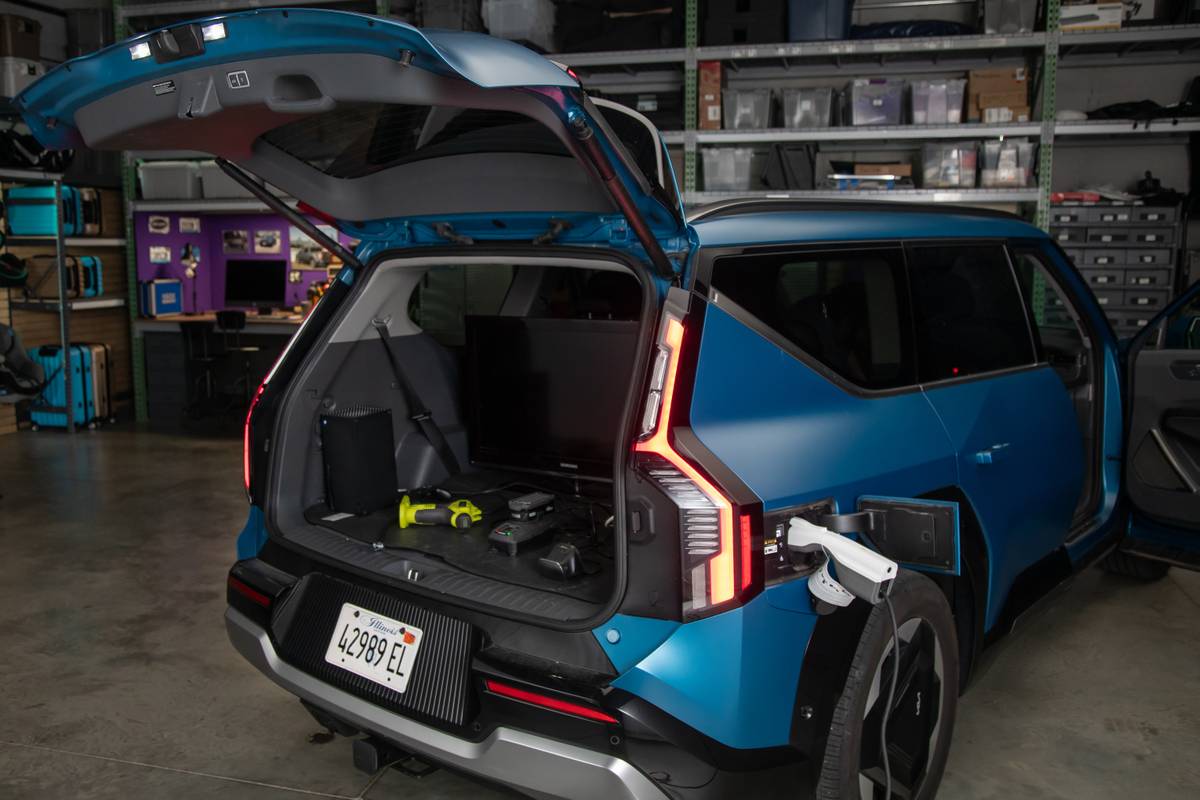Detroit Newspapers's view
The Geo Tracker is designed for young buyers who want the rugged go-anywhere, do-anything cache of the Wrangler in a little more civilized package.
Indeed, that’s the big selling point for the virtually identical Suzuki Sidekick, too, since both it and Tracker are built in Canada by Suzuki.
Although they are no match for the Jeep when the pavement ends, there is some substance beneath both the Tracker’s and Sidekick’s tough-looking exterior.
They’re actually a mini-truck, with a separate ladder-type frame that joins the completed body late in the final assembly process. That’s an old technique which has persisted in truck design because it’s good at absorbing punishment.
The Tracker and Sidekick come in hardtop, four-door models and soft-top two-door versions that ride on a very short 86.6- inch wheelbase — 11 inches shorter than the four-door trucks.
A welcome improvement for the 1996 Tracker and Sidekick is the addition of dual air bags, plus the availability of four- wheel antilock brakes, a $565 option in the Geo.
However, there’s not much new below the Tracker’s skin. The two-door version is powered by Suzuki’s familiar 1.6-liter, single-overhead-cam, 16-valve, four-cylinder engine.
While it has proven to be a very durable power plant, it’s 95 horsepower is pretty tepid, even in this group. It did, however, get the best gas mileage of any of the trucks on our test — 23.3 m.p.g.
The optional four-wheel drive system is very basic and is unchanged from previous models. This is an on-demand system, designed for use only when the going gets slick or sloppy. It’s engaged by throwing a separate shift lever for the transfer case.
The vehicle must be stationary to do this — you can’t shift on the fly — and with the basic system someone also has to get out and lock the front hubs before power will go to the front wheels.
Since almost all four-wheel drive vehicles feature hubs that lock automatically when the system is engaged, we have to admit the Tracker’s manual locks took us by surprise.
When we hit the snowy roads of the Huron National Forest, we were briefly mystified at the Tracker’s lack of traction. After some hurried thumbing through the owner’s manual, we discovered our oversight, flipped the hub switches into the right position and went our merry way.
However, having to climb out to do this is irritating, and will almost always occur in some uncomfortable locale — ankle deep in an icy puddle, for example. Murphy’s law clearly applies here. We recommend spending the extra $200 for the auto-locking hubs.
With the front hubs locked, the Tracker’s four-wheel drive system performed adequately in the wild woodlands. The compromise tires, designed more for street comfort than off- road grip, made the going tricky in spots, but this is a compromise that’s common to virtually all tires delivered as or iginal equipment on sport-utilities.
The only hill the Tracker couldn’t conquer was the Boyne Mountain ski slope. (Three of our four trucks couldn’t climb up to where our cover photo was taken, they had to towed part of the way by snow-grooming equipment.)
On the open road the Tracker feels distinctly underpowered. Our test truck came with a five-speed manual transmission, and acceleration at freeway speeds is all but imperceptible when you’re in that top gear. Long uphills required frequent downshifts.
A short wheelbase usually equates with choppy ride quality, which was true here, although the Tracker was better than the X-90 in this regard. It also felt a little less sensitive to strong crosswinds.
The Tracker’s on-road responses are quick, thanks to its short wheelbase, but its steering didn’t feel as precise as the RAV4’s and hard cornering provokes lots of body roll. Remember, kids, this is not a sports car.
Inside, the Tracker is nug but there’s plenty of room for two, and the cloth-upholstered bucket front seats offered adequate side support and enough padding for reasonable comfort.
A rear seat costs extra in the basic Tracker, but it was included in our test truck. Like all our vehicles, the rear seat-back folds forward to expand cargo space.
When the seat-back is swung back for passengers, it doesn’t extend all the way down to the seat cushion, leaving a gap that allows small stuff to slide into the tiny rear cargo well.
The instrument panel looks a little squared-off and clunky compared to the RAV4, but it does have a pair of air bags and everything is clearly marked and easy to reach.
Other standard safety features include door beams for side impact protection and daytime running lights.
While the side mirrors are adequate in size, they adjusted manually. But even hand-crank windows seem luxurious when you’ve just climbed out of a vehicle with plastic side curtains that open with a zipper.
The windows have a full frame, which helped to make the Tracker considerably quieter inside than the Jeep, though not as quiet as the steel-topped RAV4.
Thanks in part to a roof pillar that extends over the top of the vehicle, the Tracker’s top did a nice job of sealing out the bitter cold weather.
However, taking it down or putting it up is a complicated job, and the tiny latches that clamp onto the windshield header are sure to produce more than their share of broken fingernails.
While it falls short in performance, the Tracker does offer an appealing combination of style and price.
A basic bare bones two-wheel drive Tracker two-door starts at $13,285, including Geo’s $315 destination charge.
The base price for our four-wheel drive test truck: $14,765. Major extras included a $1,164 preferred equipment package (air conditioning, clock, body side moldings, front and rear floor mats), antilock brakes ($565), alloy wheels ($335) and an AM/ FM/cassette radio ($220).
Had we ordered this vehicle ourselves, we would have included the auto-locking hubs, which would have made the bottom line $17,249.
That’s steep for a mini-ute with limited off-road capability and limited power. But while the Tracker is neither as comfortable or versatile as the RAV4, it’s distinctly more affordable.
Latest news



